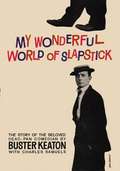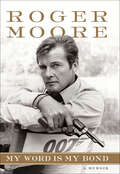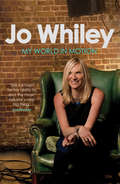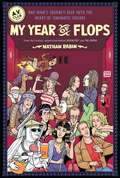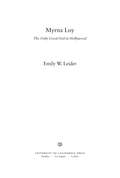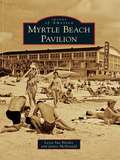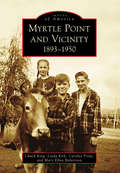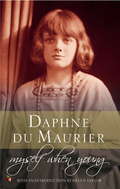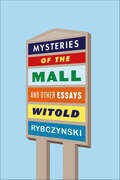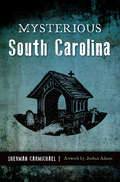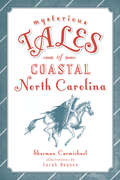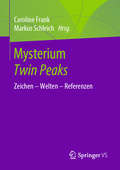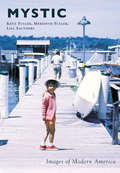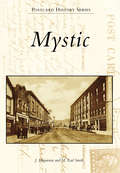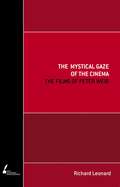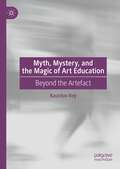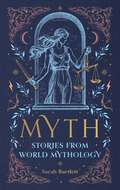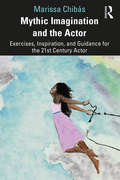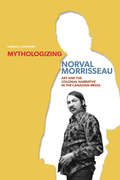- Table View
- List View
My Wonderful World Of Slapstick
by Charles Samuels Buster KeatonOver half century ago the society for the Prevention of Cruelty to Children complained to Mayor Van Wyck, of New York, that Joe Keaton, a vaudeville actor, was brutally mistreating his five-year old son. At each afternoon and evening performance the child, billed as "The Human Mop", was slammed on the floor, hurled into the wings, and sometimes banged into bass drums. Unable to find a bruise or scratch on the lad, Mayor Van Wyck refused to ban the act. The "Human Mop" bounced on to worldwide fame as Buster Keaton, one of this century's greatest comedians.In this intimate autobiography Buster Keaton tells his whole personal and professional story, beginning with his colourful and exciting childhood as the undentable tot in the "Three Keatons" whose proudest boast was having the rowdiest, roughest act in vaudeville. Buster has played with all the great ones, from George M. Cohen and Bojangles Robinson and Al Jolson to Jack Paar and Ed Sullivan and Red Skelton, during his sixty years as a star in vaudeville, silent and talking pictures, night clubs and television.Roscoe (Fatty) Arbuckle got him into the movies and taught him how to throw a custard pie. Buster could not even keep slapstick out of his eleven months as a draftee in our World War I army. He came out to help create the Golden Age of Comedy with his friends Charlie Chaplin, Harold Lloyd, Arbuckle, Mack Sennett and the Keystone Cops. Marital troubles and alcoholism once got Buster down, but could not keep him down.MY WONDERFUL WORLD OF SLAPSTICK was written with the collaboration of Charles Samuels, co-author of His Eye Is On the Sparrow, Ethel Waters' best-selling autobiography. Buster Keaton's Life Story will enchant and thrill all those who enjoy looking past the glitter and the grease paint into a magnificent performer's mind and heart.
My Word is My Bond: A Memoir
by Roger Moore“Like his James Bond movies . . . Moore’s autobiography . . . [has] a lead character who doesn’t take himself too seriously . . . full of humor.” —New York Post One of the most recognizable big-screen stars of the twentieth century, Sir Roger Moore played the role of James Bond longer than any other actor. Beginning with the classic Live and Let Die, running through Moonraker and A View to a Kill, Moore brought his finely honed wit and wry charm to one of Hollywood’s most beloved and long-lasting characters. Still, James Bond was only one in a lifetime of roles stretching back to Hollywood’s studio era, and encompassing stardom in theater and television on both sides of the Atlantic. From The Saint to Maverick, Warner Brothers to MGM, Hollywood to London to locations the world over, Roger Moore’s story is one of the last of the classic Hollywood lives as yet untold.Until now. From the dying days of the studio system and the birth of television, to the quips of Noël Coward and David Niven, to the bedroom scenes and outtakes from the Bond movies, Moore has seen and heard it all. Nothing is left out—especially the naughty bits. The “special effects” by which James Bond unzipped a dress with a magnet; the spectacular risks in The Spy Who Loved Me’s opening scene—the stories in My Word is My Bond are priceless.Moore hobnobbed with the glamorous and powerful, counting Elizabeth Taylor, Jane Seymour, and Cary Grant among his contemporaries and friends. As much as it is Moore’s own exceptional story, My Word is My Bond is a treasure trove of Hollywood history.“Charming.” —Kirkus Reviews
My World in Motion
by Jo WhileyJo Whiley is someone millions of us recognise but very few of us know. Jo's a mother, sister, DJ, wife and music-industry insider who throughout her career - and in an age of fleeting celebrity - has earned the respect of her peers and fans by simply being herself and for her constant enthusiasm, be it for established rock 'n roll royalty or emerging talent. For Jo Whiley, it's all about the music.My World in Motion offers a unique opportunity to get to know the real Jo Whiley. From her musical epiphany (being carried over the crowd at a Clash concert) to when she became friends with John Peel at Glastonbury (over some very short shorts - his not hers) and interviewed Bono (surviving a power-cut on vodka). My World in Motion is an honest, funny, self-deprecating account of Jo's professional coming of age, and what it means to be a private person in a very public world.
My Year of Flops
by Nathan Rabin A. V. ClubIn 2007, Nathan Rabin set out to provide a revisionist look at the history of cinematic failure on a weekly basis. What began as a solitary ramble through the nooks and crannies of pop culture evolved into a way of life. My Year Of Flops collects dozens of the best-loved entries from the A.V. Club column along with bonus interviews and fifteen brand-new entries covering everything from notorious flops like The Cable Guy and Last Action Hero to bizarre obscurities like Glory Road, Johnny Cash's poignantly homemade tribute to Jesus. Driven by a unique combination of sympathy and Schadenfreude, My Year Of Flops is an unforgettable tribute to cinematic losers, beautiful and otherwise.
Mycenaean Greece and the Aegean World
by Margaretha Kramer-HajosIn this book, Kramer-Hajos examines the Euboean Gulf region in Central Greece to explain its flourishing during the post-palatial period. Providing a social and political history of the region in the Late Bronze Age, she focuses on the interactions between this 'provincial' coastal area and the core areas where the Mycenaean palaces were located. Drawing on network and agency theory, two current and highly effective methodologies in prehistoric Mediterranean archaeology, Kramer-Hajos argues that the Euboean Gulf region thrived when it was part of a decentralized coastal and maritime network, and declined when it was incorporated in a highly centralized mainland-looking network. Her research and analysis contributes new insights to our understanding of the mechanics and complexity of the Bronze Age Aegean collapse.
Myrna Loy: The Only Good Girl in Hollywood
by Emily W. LeiderFrom the beginning, Myrna Loy's screen image conjured mystery, a sense of something withheld. "Who is she?" was a question posed in the first fan magazine article published about her in 1925. This first ever biography of the wry and sophisticated actress best known for her role as Nora Charles, wife to dapper detective William Powell in The Thin Man, offers an unprecedented picture of her life and an extraordinary movie career that spanned six decades. Opening with Loy's rough-and-tumble upbringing in Montana, the book takes us to Los Angeles in the 1920s, where Loy's striking looks caught the eye of Valentino, through the silent and early sound era to her films of the thirties, when Loy became a top box office draw, and to her robust post-World War II career. Throughout, Emily W. Leider illuminates the actress's friendships with luminaries such as Cary Grant, Clark Gable, and Joan Crawford and her collaborations with the likes of John Barrymore, David O. Selznick, Sam Goldwyn, and William Wyler, among many others. This highly engaging biography offers a fascinating slice of studio era history and gives us the first full picture of a very private woman who has often been overlooked despite her tremendous star power.
Myrtle Beach Pavilion
by Janice Mcdonald Lesta Sue HardeeFor almost a century, the heart of Myrtle Beach was defined by a place simply called "the Pavilion." From the original structure built in 1908, the Pavilion was the center of the resort town's growing tourism industry. It was a destination point for anyone coming to the Grand Strand. Here you could stroll the Boardwalk, play arcade games, make faces in fun mirrors, ride rides, dance the Carolina Shag, or sit on a bench and watch everyone else do all of the above. The Pavilion underwent several incarnations. The first ones were wooden and vulnerable, but the final was concrete and seemingly indestructible, standing for nearly 60 years. Hardly an architectural marvel, what the Pavilion lacked in grandeur, it made up for in pure old-fashioned fun. The beloved structure and its rides fell prey to economics and a wrecking ball in 2006.
Myrtle Point and Vicinity: 1893-1950 (Images of America)
by Carolyn Prola Linda Kirk Chuck King Mary Ellen RobertsonThe town of Myrtle Point, incorporated in 1887, was platted in a grove of myrtle trees on a point of land overlooking the South Fork of the Coquille River. Ten years after incorporation, Myrtle Point was a thriving commercial hub of 600 people. It had a riverboat landing, two hotels, and streets lined with churches, businesses, houses, and barns. This book begins in 1893, a landmark year when the telephone and the train both arrived in Myrtle Point. It ends in 1950, a time of prosperity for loggers and farmers in southwestern Oregon and for the enterprises in Myrtle Point that served them. Family photographs, many published here for the first time, reveal glimpses of a world where logging was king; the Coos County Fair was the biggest event of the year; and, early on, farm families traveled by horse team and riverboat to shop in a bustling Myrtle Point.
Myself When Young: The Shaping of a Writer (Virago Modern Classics #119)
by Daphne Du MaurierBoth her novels and her non-fiction reveal Daphne du Maurier's overwhelming desire to explore her family's history. In Myself When Young, based on diaries that she kept from 1920-1932, the most famous du Maurier probes her own past, beginning with her earliest memories and encompassing the publication of her first book and her subsequent marriage.Here, the writer is open and sometimes painfully honest about the difficult relationship with her father; her education in Paris; early love affairs; her antipathy towards London life and the theatre; her intense love for Cornwall and her desperate ambition to succeed as a writer. The resulting portrait is of a captivating and complex character.A delightful book, full of amusing and charming stories, pinpointing the literary influences and the first stirrings of books to be written in later years, and with a happy and romantic ending - THE TIMES
Myself When Young: The Shaping of a Writer (Vmc Ser. #658)
by Daphne Du MaurierBoth her novels and her non-fiction reveal Daphne du Maurier's overwhelming desire to explore her family's history.In Myself When Young, based on diaries that she kept from 1920-1932, the most famous du Maurier probes her own past, beginning with her earliest memories and encompassing the publication of her first book and her subsequent marriage.Here, the writer is open and sometimes painfully honest about the difficult relationship with her father; her education in Paris; early love affairs; her antipathy towards London life and the theatre; her intense love for Cornwall and her desperate ambition to succeed as a writer. The resulting portrait is of a captivating and complex character.A delightful book, full of amusing and charming stories, pinpointing the literary influences and the first stirrings of books to be written in later years, and with a happy and romantic ending - THE TIMES
Mysteries of the Mall: And Other Essays
by Witold RybczynskiA deep exploration of modern life that examines our cities, public places, and homesFollowing How Architecture Works, Witold Rybczynski casts a seasoned critical eye over the modern scene with Mysteries of the Mall. His subject is nothing less than the broad setting of our metropolitan world. In thirty-five discerning essays, Rybczynski ranges over subjects as varied as shopping malls, Central Park, the Paris opera house, and America's shrinking cities. Along the way, he examines our post-9/11 obsession with security, the revival of the big-city library, the rise of college towns, and our fascination with vacation homes, and he visits Disney's planned community of Celebration. By looking at contemporary architects as diverse as Frank Gehry, Moshe Safdie, and Bing Thom, revisiting old masters such as Christopher Wren, Le Corbusier, and Frank Lloyd Wright, and considering such unsung innovators as Stanley H. Durwood, the inventor of the Cineplex, Rybczynski ponders the role of global cities in an age of tourism and what places attract us in the modern city.Mysteries of the Mall is required reading for anyone curious about the modern world and how it came to be that way.
Mysterious South Carolina
by Sherman CarmichaelMaster storyteller Sherman Carmichael is back with another collection of the weird, strange and mysterious in the Palmetto State. Read about the return of the infamous Lizard Man. Learn why the ghost of Francis Marion regularly appears at a church cemetery for a rendezvous. Discover the Sea Pines Shell Ring and learn of its Native American origin. Walk the halls of the old South Carolina Lunatic Asylum and hear the moans of former patients. Join Carmichael as he contemplates these stories and many more from the dark side of South Carolina.
Mysterious Tales of Coastal North Carolina (Forgotten Tales)
by Sherman Carmichael Sarah HaynesMaster storyteller Sherman Carmichael ventures into the Tar Heel State to deliver strange and mysterious tales along the coast. Read about shipwrecks such as that of the SS Liberator, which still sits at the bottom of the ocean off the coast of Diamond Shoals, and legendary storms like the 1911 Water Spouts, which were described as tornadoes spinning wildly atop the ocean. Find out why the Cape Hatteras Lighthouse is said to be haunted by a large black cat. Learn about the origins of Boo Hag, a fiendish creature that sucks the life out of her victims as they sleep at night--a tale that originates from the rich Gullah culture of the Carolinas. Join Carmichael as he contemplates these stories and more from the mysterious side of North Carolina's beloved coastal counties.
Mysterium Twin Peaks: Zeichen – Welten – Referenzen
by Caroline Frank Markus SchleichDer Sammelband bringt verschiedene Zugänge und Kontexte zu Twin Peaks zusammen und greift dabei auch die besonderen produktions- und rezeptionsästhetischen Spezifika der Serie auf. Das Spektrum der Beiträge umfasst ganz unterschiedliche Themenbereiche: Genremix, Transaktualität, komplexe narrative Strukturen, Traum und Traumhaftigkeit, Geschlechts- und Identitätskonzepte, extremer Fankult, visuelle Ästhetik, akustische Dimensionen, postmoderne Verweiskultur und nicht zuletzt die Frage danach, welche anderen Quality TV-Serien durch Twin Peaks erst möglich wurden.
Mystic (Images of Modern America)
by Meredith Fuller Kent Fuller Lisa SaundersSince Mystic, Connecticut, celebrated its 300th anniversary in 1954, it has evolved from a working-class village into a tourist-driven community while embracing its quaint New England charm and keeping its rich history alive. The shoreline village of two townships (Stonington to the east; Groton to the west) is divided by the Mystic River, which passes through the downtown center where the iconic bascule bridge unites the community. Many establishments occupy buildings preserved from Mystic's deeply anchored shipbuilding past. Towering wooden ships, beluga whales, creative arts, shops, restaurants, and events overflowing with Mystic's heart and soul attract hundreds of thousands of visitors each year.
Mystic (Postcard History Series)
by M. Earl Smith J. HugueninOn the banks of the Mystic River, the Connecticut community of Mystic has a maritime history that stretches back beyond the founding of the nation. Starting as a Native American settlement, the area switched hands—first to the Dutch, then to the English—before finally becoming a part of the United States after the Revolutionary War. Mystic’s location made it an ideal port for coastal commerce. As the nation grew, so did Mystic, with the village using its unique location to serve both the coastal fishing industry and the US Navy. The Mystic drawbridge serves as a reminder of the community’s maritime heritage. In its current state, Mystic serves as both a cradle to some of Connecticut’s oldest families and a tourist attraction for those wanting to sample vintage New England life.
Mystical Gaze of the Cinema: The Films of Peter Weir
by Richard Leonard'Magical', 'out of this world', 'an experience you'll never forget': Peter Weir's films have enthralled audiences around the globe. Whether in iconic Australian works such as Picnic at Hanging Rock and Gallipoli or international mainstream thrillers such as Witness, Weir has deliberately created mystical movie experiences. Modern cinema studies is used to dissecting films on the basis of gender, class or race: now, for the first time, Richard Leonard shows that a mystical gaze also exists and is exercised in the secular multiplex temples of today. The Mystical Gaze of the Cinema is a meticulous and accessible book that uses a psychoanalytic approach incorporating the insights of Jung, film theory and theology to break new ground in what continues to be a hot topic in cinema studies: the spectator/screen relationship. Leonard provides a fresh and innovative perspective on what happens when we behold a film.
Mystical Stitches: Embroidery for Personal Empowerment and Magical Embellishment
by Christi JohnsonExplore personal transformation through the stitching of dreams and intentions. Anything but ordinary, Mystical Stitches combines the beloved and accessible craft of embroidery with a spiritual element, introducing a rich treasury of 200 magical symbols you can use to set an intention and create personal icons to wear or embellish items in the home. Christi Johnson offers unique patterns inspired by botanicals, animals, numbers, the cosmos, earth elements, zodiac signs, and mythical beasts, for novice or well-practiced crafters to combine into talismans with personal meaning. Johnson&’s folk art style is vibrant and unintimidating and provides a framework for bringing spiritual elements into physical form. This publication conforms to the EPUB Accessibility specification at WCAG 2.0 Level AA.
Mysticism in the Theater: What’s Needed Right Now (Routledge Advances in Theatre & Performance Studies)
by Tom BlockMysticism in the Theater introduces theater makers to the power and possibility of using historical mystical ideas to influence all aspects of a production. Historical mysticism represents ideas developed by recognized spiritual thinkers in all religions and time periods: individuals who stilled their ego, and perceived the unity of all, hidden within the apparent multiplicity of existence. This unique manner of spiritual inlay allows theatrical presentations to find the height of artistic expression: art at the intersection of our historical moment and the eternal. This study introduces theater makers to the history of mystical inspiration within performance work and develops strategies for inserting mystical ideas into their productions. The book ties this model into theatre’s history, as mystical ideas and quotes have been inserted into productions from Greek theatre through Shakespeare and into the present day. This book explores how teachings and ideas of specific historical mystical thinkers might influence all aspects of contemporary theatrical productions including writing, directing, acting, stagecraft/set design, lighting design, costume design, sound design, and choreography.
Myth, Mystery, and the Magic of Art Education: Beyond the Artefact
by Kaustuv RoyThis book provides a new understanding of art education, connecting art, necessity, and pedagogy. Plenty has been written about art education, but its potential contribution to inner autonomy and existential emancipation due to the re-articulation of time and space in art has not been adequately explored in a pedagogic context. This book explores art as an affective continuum--not a plaything of culture, but rather a mode of alignment of the existential Eros with our ontological truth.
Myth: Folklore, legends and fables from around the world
by Sarah BartlettHumans have always told stories, and myths have been used for millennia as a means of storytelling. A good tale can deliver an important message, an understanding of deeper emotional conflicts, or perhaps act as a light piece of entertainment. Myths have always been a useful lens to see reality through, as well as granting explanations for the unexplainable. Myth provides detailed information on a wide range of myths and legends throughout history and across the globe. Ancient myths of Egypt, Rome, Greece, Scandinavia and the Celtic world are explored alongside the legends of Native Americans, Australian Aborigines, Aztecs and Incas, Africa and Asia. From Aphrodite to King Arthur and the Epic of Gilgamesh to Mayan death gods, here you will find a guide to the specific traditions as well as an exploration of common themes in myths worldwide including creation, love, quests and the underworld.This is an indispensable guide for any mythology enthusiasts.
Myth: Folklore, legends and fables from around the world
by Sarah BartlettHumans have always told stories, and myths have been used for millennia as a means of storytelling. A good tale can deliver an important message, an understanding of deeper emotional conflicts, or perhaps act as a light piece of entertainment. Myths have always been a useful lens to see reality through, as well as granting explanations for the unexplainable. Myth provides detailed information on a wide range of myths and legends throughout history and across the globe. Ancient myths of Egypt, Rome, Greece, Scandinavia and the Celtic world are explored alongside the legends of Native Americans, Australian Aborigines, Aztecs and Incas, Africa and Asia. From Aphrodite to King Arthur and the Epic of Gilgamesh to Mayan death gods, here you will find a guide to the specific traditions as well as an exploration of common themes in myths worldwide including creation, love, quests and the underworld.This is an indispensable guide for any mythology enthusiasts.
Mythic Imagination and the Actor: Exercises, Inspiration, and Guidance for the 21st Century Actor
by Marissa ChibásIn Mythic Imagination and the Actor, Marissa Chibás draws on over three decades of experience as a Latinx actor, writer, filmmaker, and teacher to offer an approach to acting that embraces collective imagination, archetypal work, and the mythic. The book begins with a comparative analysis between method acting and mythic acting, encouraging actors to push past the limits of singular life experience and move to a realm where imagination and metaphor thrive. In the context of mythic acting, the book explores awareness work, solo performance creation, the power of archetypes, character building exercises, creating a body/text connection, and how to be the detective of your own process. Through this inclusive guide for a new age of diverse performers traversing gender, ability, culture, and race, readers are able to move beyond their limits to a deep engagement with the infinite possibilities of rich imagination. The final chapter empowers and motivates artists to live healthfully within the practice and create a personal artistic vision plan. Written for actors and students of acting, American Drama, and film and theatre studies, Mythic Imagination and the Actor provides practical exercises and prompts to unlock and interpret an actor’s deepest creative sources.
Mythic Imagination and the Actor: Exercises, Inspiration, and Guidance for the 21st Century Actor
by Marissa ChibásIn Mythic Imagination and the Actor, Marissa Chibás draws on over three decades of experience as a Latinx actor, writer, filmmaker, and teacher to offer an approach to acting that embraces collective imagination, archetypal work, and the mythic. The book begins with a comparative analysis between method acting and mythic acting, encouraging actors to push past the limits of singular life experience and move to a realm where imagination and metaphor thrive. In the context of mythic acting, the book explores awareness work, solo performance creation, the power of archetypes, character building exercises, creating a body/text connection, and how to be the detective of your own process. Through this inclusive guide for a new age of diverse performers traversing gender, ability, culture, and race, readers are able to move beyond their limits to a deep engagement with the infinite possibilities of rich imagination. The final chapter empowers and motivates artists to live healthfully within the practice and create a personal artistic vision plan.Written for actors and students of acting, American Drama, and film and theatre studies, Mythic Imagination and the Actor provides practical exercises and prompts to unlock and interpret an actor’s deepest creative sources.
Mythologizing Norval Morrisseau: Art and the Colonial Narrative in the Canadian Media
by Carmen L. Robertson"Mythologizing Norval Morrisseau" examines the complex identities assigned to Anishinaabe artist Norval Morrisseau. Was he an uneducated artist plagued by alcoholism and homelessness? Was Morrisseau a shaman artist who tapped a deep spiritual force? Or was he simply one of Canada’s most significant artists? Carmen L. Robertson charts both the colonial attitudes and the stereotypes directed at Morrisseau and other Indigenous artists in Canada’s national press. Robertson also examines Morrisseau’s own shaping of his image. An internationally known and award-winning artist from a remote area of northwestern Ontario, Morrisseau founded an art movement known as Woodland Art developed largely from Indigenous and personal creative elements. Still, until his retrospective exhibition at the National Gallery of Canada in 2006, many Canadians knew almost nothing about Morrisseau’s work. Using discourse analysis methods, Robertson looks at news stories, magazine articles, and film footage, ranging from Morrisseau’s first solo exhibition at Toronto’s Pollock Gallery in 1962 until his death in 2007 to examine the cultural assumptions that have framed Morrisseau.
